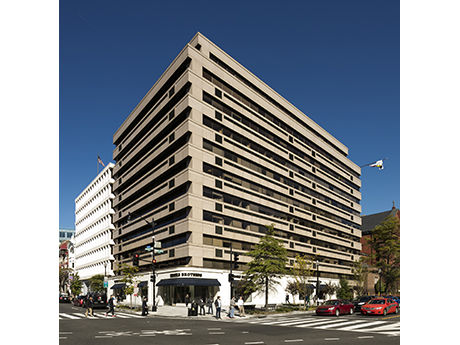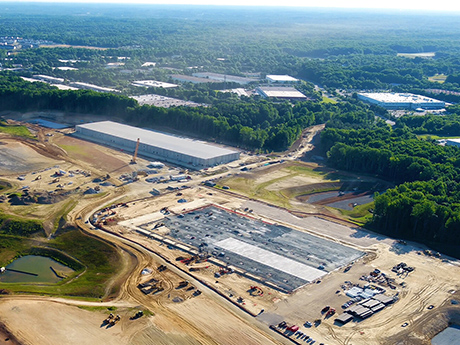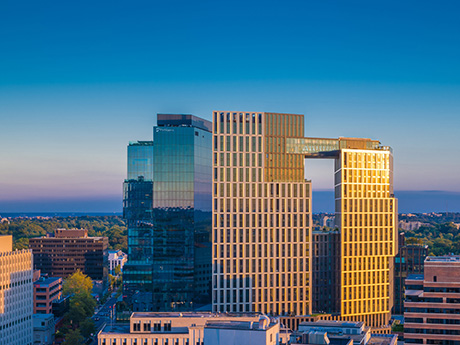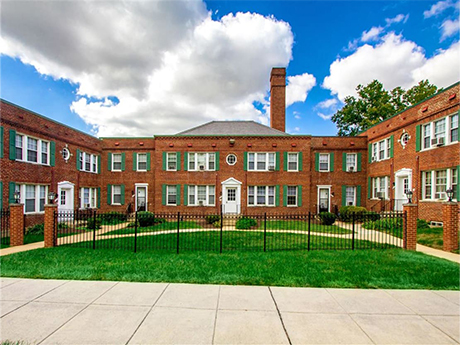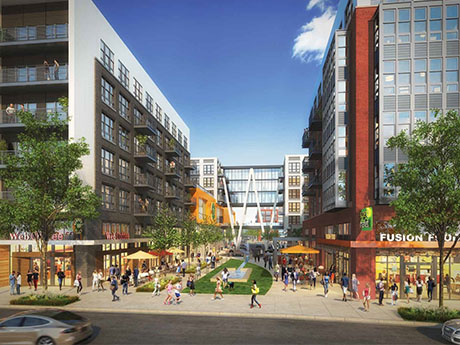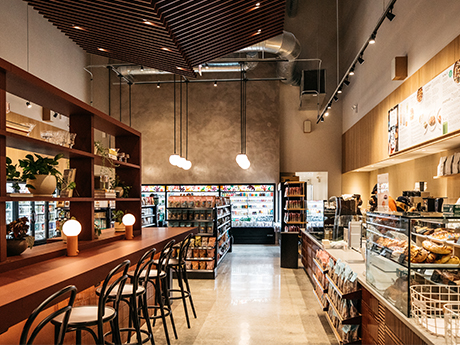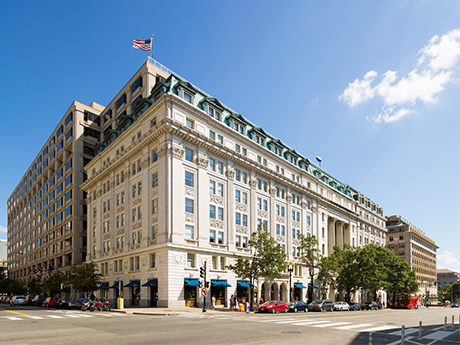In the summer of 2012, fresh out of college and starting my career in retail brokerage at KLNB, a seasoned retail broker-turned-developer warned me to consider other careers. “Retail is dying,” he said. “Why would people go to stores when it’s so easy to order online?” Well, it’s been 12 years since that moment, and I’m still waiting for the retail boogeyman to appear. As I write this, I’m happy to report he hasn’t arrived — and the data suggests he’s nowhere in sight. The Washington, D.C., metropolitan statistical area (MSA) is now in its tightest fundamental position on record due to limited new supply and continued demand from national, regional and franchised concepts. In the Washington, D.C. market, we have the second-lowest retail square footage per capita among major MSAs, with new retail supply representing just 0.4 percent of total inventory. This places the Capital Region in the bottom quartile of retail real estate inventory growth among national MSAs that have more than 100 million square feet of existing inventory. The result? Retail availability in the D.C. metro has decreased to 4.8 percent (compared to the national average of 4.7 percent), down from 5.1 percent year-over-year and 5.3 percent …
Market Reports
The Washington, D.C., office market is facing challenging times, marked by unprecedented vacancy rates, dwindling demand and a significant supply-demand imbalance. Within these constraints, the flight to quality trend is reshaping how investors and lenders view office assets and should lead to an inventory reclassification. The divide between high-quality assets and lesser properties widens almost daily, creating a bifurcated market with fierce competition for quality space. Meanwhile, older, less desirable properties languish, accumulating vacancies as they fail to meet current occupier expectations. Without intervention, the less desirable properties will continue to drag down the market’s perception, obscuring the success of top-tier spaces with a headline vacancy rate. To contribute to the stabilization of the market, office participants must acknowledge this divide and assess distressed assets not as liabilities, but as opportunities to reset and reclassify properties based on realistic usage and demand. Lenders are central to this process as they control a substantial portion of distressed office stock. After years of extending loans to stave off foreclosure during uncertain times, many are now realizing that relief is unlikely to materialize organically. As a result, foreclosures are already up 121 percent in 2024 year-to-date over 2023 in Washington, D.C. On average, …
Resilient DC Industrial Market Is Growing But Softening as Vacancy Rates Creep Higher
by John Nelson
The U.S. industrial real estate market continues to sustain, with national vacancy rates steadily creeping toward 7 percent (6.8 percent at the time of this writing). Over the past three years, the industrial real estate market continued to set records and became known as the darling asset class within the commercial real estate community. However, the market is showing signs of reversion to historical velocity and vacancy rates. The industrial vacancy rate is steadily climbing in the Washington, D.C., metro area as demand softens for third-party logistics in second-quarter 2024. Vacancies are up to 6.5 percent after reaching an all-time low of 3.8 percent at the end of 2022. The market remains tight by historical measures. However, normalized leasing velocity, a few large tenant moveouts and reduced demand is expected to provide upward pressure on the vacancy rate in 2025. Subleasing activity trended upward in the past six to 12 months to over 1.3 million square feet. A few examples of large sublets include 393,000 square feet put on the market at Capital Gateway in Brandywine; Builders First Source moved out of 135,000 square feet at Plaza 500 in Alexandria; and in the second quarter, Western Express vacated 102,000 square …
The multifamily market in the Washington, D.C., metro area has experienced meaningful shifts in 2024, marked by moderate demand, consistent construction and evolving investment patterns. As a major urban hub, D.C. continues to attract both local and out-of-state investors eager to tap into its growing potential. Out-of-state capital A key trend in the D.C. multifamily market is the strong influx of out-of-state capital. This year, 44 percent of buyers in our DMV (D.C., Maryland and Virginia) listings came from outside the region, drawn by the area’s stability and long-term growth potential. These out-of-market investors often pay a premium over local buyers, keeping deal volume and pricing competitive even amid rising interest rates. This steady inflow of external capital has reinforced the market’s resilience, underscoring the perceived value of D.C. multifamily assets. The demand from out-of-state investors has also provided stability to the market, helping to sustain price levels and liquidity despite macroeconomic headwinds. By bolstering interest in multifamily properties, this capital flow supports continued growth and positions D.C. as a desirable destination for long-term investment. As this trend persists, the D.C. metro area is likely to remain a focal point for diverse capital sources, ensuring strength and adaptability in its …
The Washington, D.C., metro area, known for its steady and stable economic foundation, stands at the forefront of a transformative period in the U.S. commercial real estate market. Amid the backdrop of an evolving macroeconomic market, it’s essential to recognize the adaptability and resilience of the metro D.C. area’s multifamily market. While recent capital market fluctuations continue to impact asset pricing across multiple sectors, the region’s fundamentals and property level performance have remained strong. According to Berkadia’s third-quarter multifamily market report, rent is up 3.6 percent in the District. Many properties are experiencing strong rent growth, which is anticipated to continue as there is a complete lack of future supply and the bulk of the apartment supply has delivered and is currently in lease-up. While some regions have headwinds that are cause for some investor caution, particularly regarding regulatory concerns, other areas like Northern Virginia are capturing significant interest from buyers and showcasing the region’s ability to still command buyer demand. This is, in many ways, the recurring narrative for the D.C. metro region: resilience supported by concrete fundamentals. Strong foundation In the D.C. metro area, the decline in supply is highly likely to continue to drive a noteworthy increase …
Affordable HousingDistrict of ColumbiaMarket ReportsMarylandMultifamilySoutheastSoutheast Market ReportsVirginia
More Affordable Housing Options Needed in Greater D.C. Region, Says Fossi of Enterprise Community Development
by John Nelson
WASHINGTON, D.C. — In 2019, the Metropolitan Washington Council of Governments issued a report stating that the D.C. region — comprising the city, Northern Virginia and suburban Maryland — needed to add 320,000 more housing units between 2020 and 2030, and that at least 75 percent of this new housing should be affordable to low- and medium-income households. Rob Fossi, senior vice president of real estate development at Enterprise Community Development, says the figure has only climbed in recent years due to macroeconomic and local challenges. “In the three years since that report was issued, this demand has only intensified while supply chain interruptions, interest rate spikes and competing resource challenges precipitated by the COVID-19 pandemic have all been challenges to maintain pace,” says Fossi. Enterprise Community Development, an affiliate of Enterprise Community Partners, is the top nonprofit owner and developer of affordable homes in the Mid-Atlantic with a portfolio spanning about 13,000 apartments that house more than 22,000 residents. The firm is actively developing and preserving affordable housing across the region in order to address the demand, which Fossi says shows no signs of abating anytime soon. “There is little doubt that the demand for quality affordable housing will …
Across the country, investors are facing some difficult hurdles. Rising interest rates, impending economic recession and rising construction costs are making it increasingly difficult for proposed deals to penicl out for investors. These issues, coupled with a swath of non-performing loans that are nearing maturity, have been the first indications we have seen of a bear market in the real estate world, and there are no signs of improvement in the near future. In times of uncertainty, we often see investors adhere to a conservative approach to investment, which normally means increased focus on core markets and assets. One area of focus in which investors have remained bullish is Washington, D.C.’s multifamily market as it continues to thrive, despite turmoil in the larger U.S. economy. Developers broke ground on new multifamily product in excess of 4,000 units for the fourth consecutive quarter, a first for the D.C. market. Multifamily sales volume has not quite matched the bull market of 2021; however, sales in 2022 still outpace most years in the metro’s history. Whether it’s construction on ground-up development of multifamily product, or the purchase of existing multifamily product, the D.C market has not shown any signs of slowing down. For …
Sustained leasing velocity for industrial/warehouse space in the Northern Virginia market, combined with the nearly insatiable demand for data center product, is contributing to developers repurposing existing business communities with this asset class to support demand, as well as companies expanding their geographic footprints into suburban Maryland and Central Virginia to secure space. This trend could be pivoting slightly due to the recent slowdown in leasing activity both locally and nationally as it relates to rising interest rates, the prospects for a looming recession and the possible end of a prolonged real estate cycle. The vacancy rate for industrial/warehouse space in the region currently stands at just over 2 percent. In the last quarter, the Northern Virginia industrial market experienced the largest pipeline in its history with more than 1 million square feet of space delivered, with nearly 5 million square feet of space in the development pipeline. The largest projects are contained within Stafford County as land in Loudoun and Fairfax counties has become unaffordable, or simply unattainable. Triple-net asking rents reached another all-time high of $12.45 per square foot in the third quarter, aided in part by these new deliveries. New space remains scarce and commands a premium, …
So much has been made about the future of retail in the United States. Is it dead? Is it back? How has it evolved? No doubt, retail was the sector most affected by the COVID-19 pandemic, and that is also true here in Washington, D.C. If you look at regional data, it appears to be rebounding nicely. The overall market currently boasts a near record-low vacancy rate at just 5.1 percent, according to CoStar Group. Tighter market conditions have helped landlords restore pricing power throughout the District, and asking rents and rent growth have surpassed pre-pandemic highs. When we measure by net absorption, retail demand in the region in 2022 is on pace to reach its highest level since 2016. But numbers don’t tell the whole story as the retail sector’s recovery in D.C.’s downtown market post COVID differs greatly from all of the metropolitan area’s other submarkets in a scenario that can only be described as a tale of two markets. Downtown D.C. So, what’s driving downtown retail these days? Simply, it’s the office market. Retail’s post-pandemic recovery is almost entirely dependent on office workers, and there is no more significant factor at play for its success than corporation’s …
Downtown Washington, D.C., is confronting many of the same pandemic-generated challenges as other urban markets across the United States. This includes above-average and record high commercial vacancy (office and retail), as well as lower-than-average daytime foot traffic, in part due to an increase in hybrid work. Yet there is a case to be made that now is a unique moment for leasing office (and retail) space in the District’s central business district (CBD). The loss of foot traffic has hit downtown retail particularly hard, especially fast-casual dining. Coffee shops and sandwich places that depend on office workers have closed at a higher rate than other food-related retail. But the pedestrians are coming back. Kastle Systems’ data from the DowntownDC Business Improvement District (BID) shows an increase since Labor Day in the number of workers at their desks, with approximately 42 percent of the pre-pandemic number of employees in-office on a weekly basis, compared with around 33 percent last spring. This is expected to rise as more employers establish return-to-office policies. Despite 2022’s turbulent economy over the first six months, D.C.’s office leasing activity was up 16 percent compared with the first half of 2021, according to Cushman & Wakefield. The …
Newer Posts


